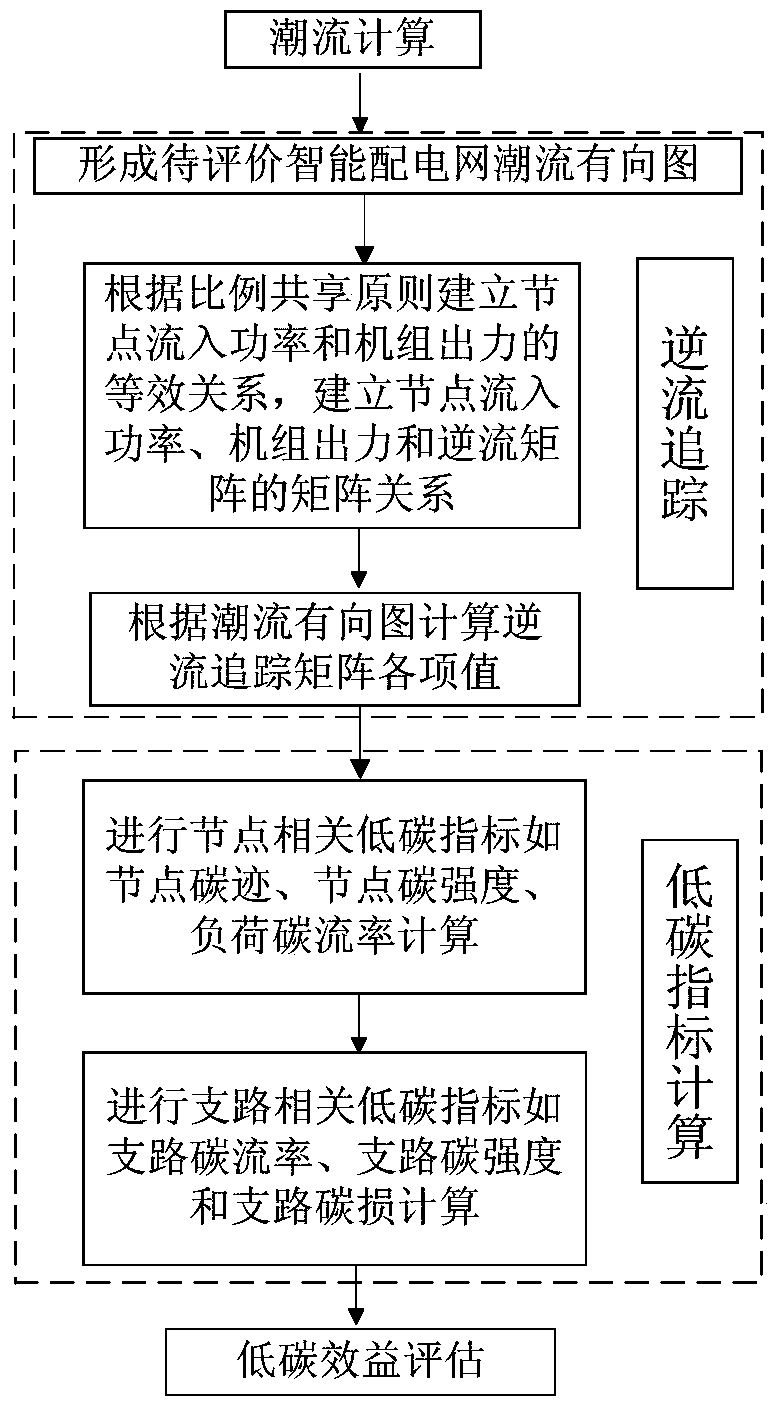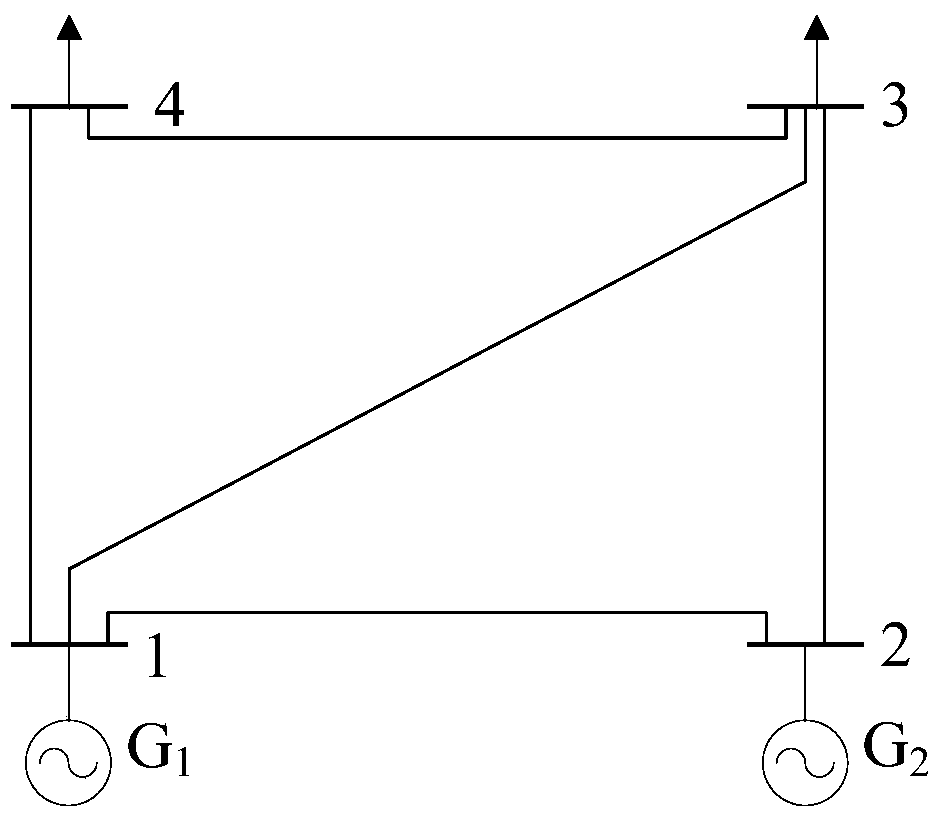A low-carbon benefit assessment method for smart distribution network
An intelligent power distribution network, efficient technology, applied in electrical components, circuit devices, AC network circuits, etc., can solve problems such as reasonable allocation of low-carbon emission reduction targets for unfavorable power systems, and inability to determine low-carbon responsibilities.
- Summary
- Abstract
- Description
- Claims
- Application Information
AI Technical Summary
Problems solved by technology
Method used
Image
Examples
Embodiment Construction
[0018] The present invention will be described in detail below in conjunction with the accompanying drawings.
[0019] Such as figure 1 As shown, the present invention proposes a method for evaluating low-carbon benefits of a smart distribution network, which includes the following steps:
[0020] 1. The intelligent distribution network to be evaluated sends the collected network and load data information to the power flow calculation module, and the power flow calculation module performs power flow calculation of the entire network according to the received network and load data information, and sends the power flow calculation results to the reverse flow Tracking module, the specific process is:
[0021] (1) Form the node admittance matrix according to the network data information collected by the smart distribution network to be evaluated, Y ij =G ij +jB ij ;
[0022] In the formula, Y ij is the admittance of line i-j, G ij is the conductance of line i-j, B ij is th...
PUM
 Login to View More
Login to View More Abstract
Description
Claims
Application Information
 Login to View More
Login to View More - R&D
- Intellectual Property
- Life Sciences
- Materials
- Tech Scout
- Unparalleled Data Quality
- Higher Quality Content
- 60% Fewer Hallucinations
Browse by: Latest US Patents, China's latest patents, Technical Efficacy Thesaurus, Application Domain, Technology Topic, Popular Technical Reports.
© 2025 PatSnap. All rights reserved.Legal|Privacy policy|Modern Slavery Act Transparency Statement|Sitemap|About US| Contact US: help@patsnap.com



